Leaving the Top Chef competition, I could not help thinking how much of a struggle it was to cook without fresh vegetables and herbs that were not available in the Air Force Base kitchen. It made me think of the challenges many Americans face to find fresh produce and healthy ingredients, and the sad results for the nation’s health. I run an industrial size kitchen feeding 2500 people a day, and despite the size and scope of the operation I manage, everything we put on the table to feed our guests is made from scratch. The Air Force Colonel had made it clear that these were some of America’s finest Airmen and Airwomen. He told of their extensive travels abroad that have enlightened their palates — yet sadly the kitchen walk-in refrigerator at the base had very little fresh produce […]
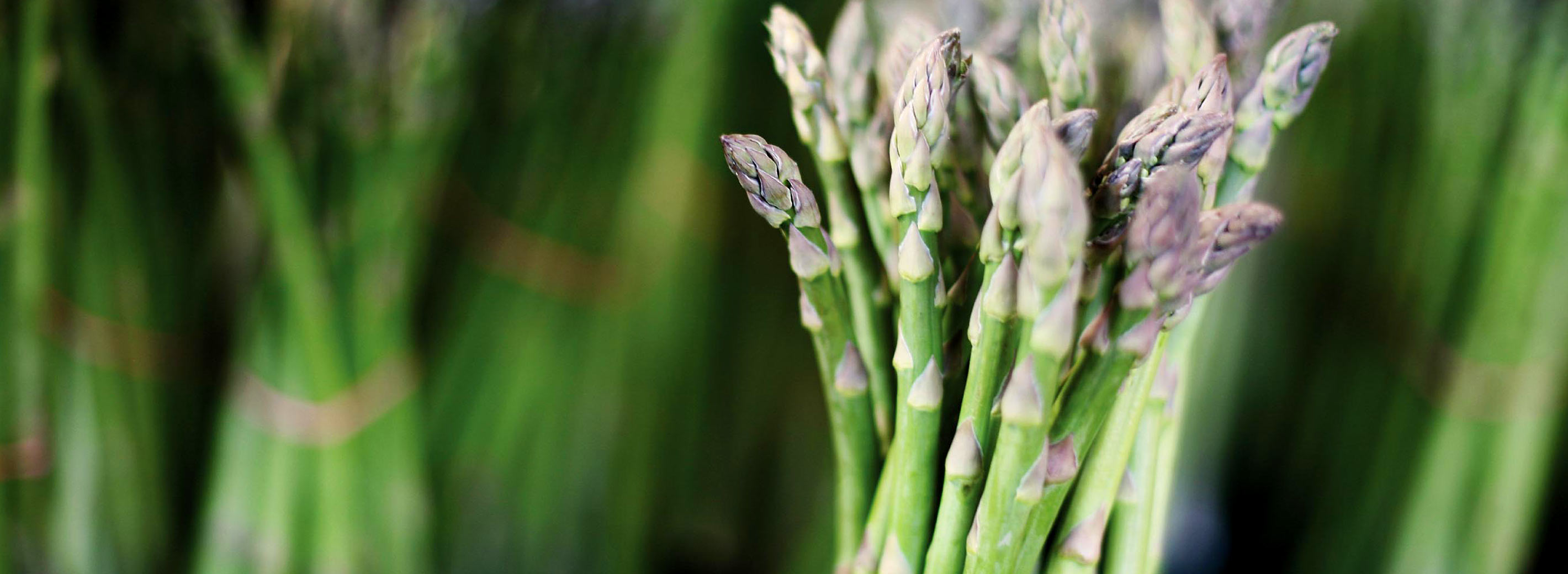
Blog: Uncategorized
+ Blog Categories
“The Real” Bon Appétit
- Blog
I ate Bon Appétit food at WashU in St. Louis for four years—and I guess my accumulated knowledge of Bon Appétit by the time I graduated just goes to show that just because you put something in your mouth doesn’t mean you know a THING about it. So here are my very first impressions of “the Real Bon Appétit”…of finally diving into the “real world”, and the truth about salmon…
Meet Midwest Fellow Dayna Burtness
- Blog
Hey everyone! I’m Dayna Burtness, the new Midwest Fellow for the Bon Appétit Management Company Foundation. Carolina and I will be vlogging and blogging here over the next year about our experiences working with chefs, farmers and college students across the country. Check back weekly for updates or subscribe to our RSS feed.
A Student’s View on Farming
- Blog
After reading Nina's blog posts about working on a student garden guide, Sierra Bintliff, a student at Wesleyan University, was moved to write in about her student farming experience: When I received an email last winter—through a farming listserv organized by Wesleyan University students—about interning for Bon Appétit on a small organic farm at St. Joseph’s College, I was thrilled at the opportunity to work for the summer in Maine for a company whose mission statement embodies the ideal combination of my two passions: sustainability and food. As a Wesleyan student I both enjoyed the food provided by Bon Appétit’s talented kitchen staff and worked as a Bon Appétit catering employee. There I experienced the genuine enthusiasm of the Bon Appétit community for providing quality food from sustainable sources. St. Joseph’s College and Bon Appétit’s combined objective for this summer […]
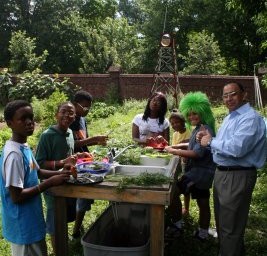
Camp Kumquat: Teaching Farm to Fork to the Next Generation
- Blog
I am currently compiling research about student gardens that sell their produce to the Bon Appétit café on campus. This is a trend that is becoming more and more prevalent around the country. By growing their own food and selling it to Bon Appétit, students are learning about sustainable and local agriculture and providing their campus with food that is, in many cases, grown right on the other side of the green! While doing my research, the unique initiative of one student garden really stuck out to me. I hope you are as touched by it as I was. Jen Swanson and Katie Anderson (or Dragonfly and Chestnut as they are known at the Burning Kumquat student farm at Washington University in St. Louis) both studied abroad in eco-villages in India and Scotland, respectively. When they returned to school, they […]
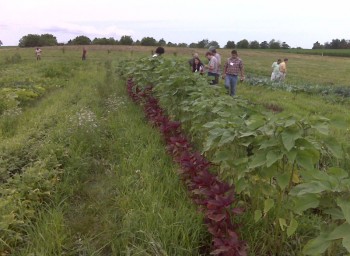
Student Farms: The Next Sustainable Frontier
- Blog
Student farms are hardly a new concept. However, it seems that after the height of the counterculture food movement of the 1960s and 70s, the idea of growing food on your own campus was not as high on students’ priorities list. That has all begun to change in recent years, as students all over the country (and the world!) are physically taking back the land and growing produce in a sustainable way. This idea is becoming so popular that the Rodale Institute has developed a directory of student farms and gardens to try to keep track of all of these new hotbeds of social and political activity. Though I have been on the board of a student garden committee at my university and am presently undertaking research for my internship at Bon Appétit about this subject, it shames me to say […]
Virtual Tour of Our USF Café
- Blog
For many of you who have been reading about Bon Appétit Management Company's food, philosophy, and leadership in sustainability, here's a chance to see what a Bon Appétit café actually looks like! Cookbook author Nina Simonds recently visited our team at the University of San Francisco and explored the array of fresh, seasonal, cooked-from-scratch meals in the café. Check out her Spices of Life blog post about this trip. Experience Bon Appétit's mouth-watering culinary offerings (virtually, of course) as Nina and Executive Chef Jon Hall take you station by station in the café. – Katherine Kwon, Communications Project Manager
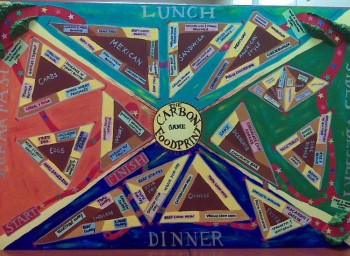
The Carbon Foodprint Game: Bringing the Low Carbon Diet Calculator into the Classroom
- Blog
As a part of a course I took last semester, I was asked to create a project addressing any geological concept for which I had an interest. Because the project did not have to explicitly relate to material being covered in class, I decided to create a board game using the information I had learned using Bon Appétit Management Company’s Low Carbon Diet Calculator. I wanted to theoretically offer the young adult audience a fun way to explore and learn more about the relationship between food, one’s carbon footprint, and global warming. The term global warming seems to be discussed in almost every science class nowadays, but teachers make the same suggestions every time this issue comes up in conversation (I can almost hear my fourth grade teacher singing her off-key version of a popular reduce, reuse, recycle song, […]
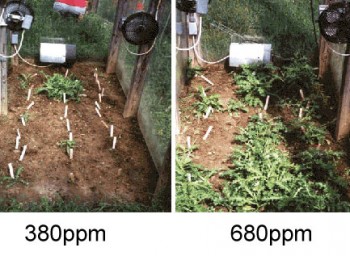
Will New England really be New England without cranberry bogs?
- Blog
A team of research scientists working for multiple Federal agencies including Defense, Agriculture, Commerce and others released a report on June 16 that got curiously little media attention. Draped in the dry language of government reports, Global Climate Change Impacts in the United States paints a dramatic picture of what our agricultural system could become if average temperatures rise more than two degrees Celsius over the next half century. To wit: 1. It is a myth that higher temperatures will make it easier to grow crops and livestock in regions that are now cold. While many crops positively respond to higher levels of carbon dioxide concentrations in the atmosphere, they reported, higher levels of warming affect growth and yields negatively. Why? With higher temperatures also come “extreme events” such as heavy downpours and droughts which reduce yields overall and kill […]
Sustainability: It’s not just a buzzword, it’s a lifestyle
- Blog
About ten days ago, I had the honor of speaking on a panel called “Organic on the Green: Conversations with College Aged Consumers” at the All Things Organic Conference and Trade Show. The honor was two-fold because #1, the panel was named after the blog I started last summer, and #2, I was joined by Maisie Greenawalt, the Vice President of Bon Appétit Management Company. The purpose of the panel was to facilitate “a conversation with college-aged organic consumers” in order to allow the organic industry to hear what the younger generation looks for in organic products. Like most college students, the only presentations I have done have been to about 25 fellow students and a professor who I hoped to impress for “the A”. Needless to say, in preparation for the panel, I had done research until I was blue in […]